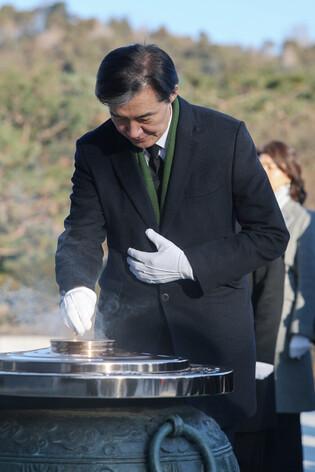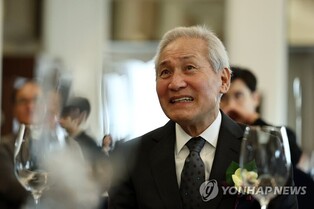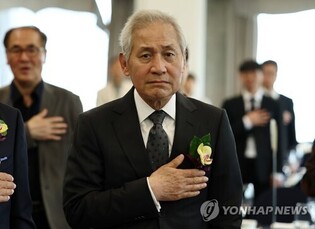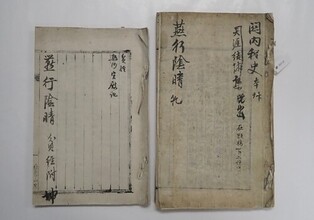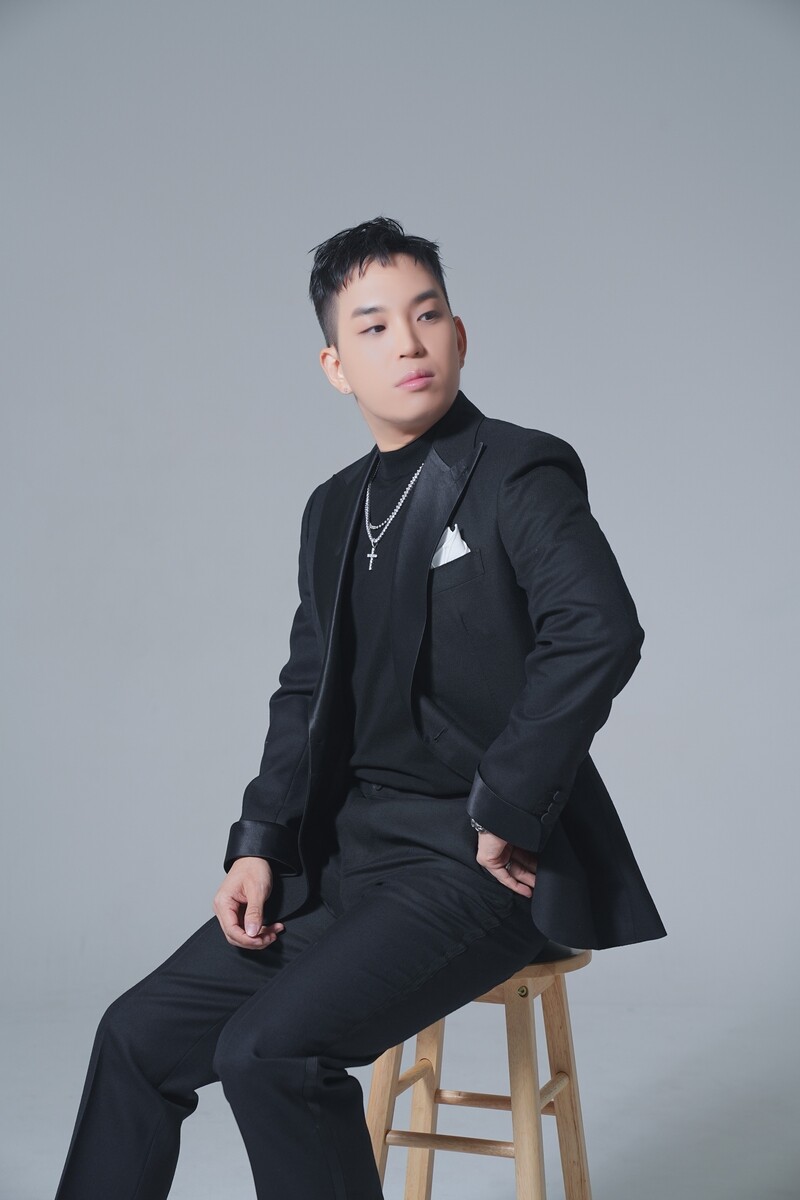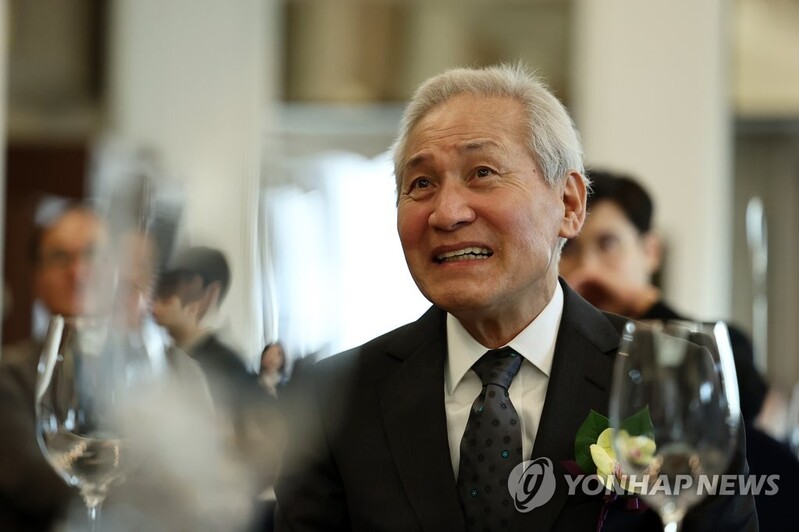* Editor's Note: According to the Korea Foundation's 2024 report, there are nearly 225 million Hallyu (Korean Wave) fans worldwide. With the advent of the "Digital Silk Road," transcending time and space, we are entering the era of "Hallyu 4.0." To help readers gain a fresh perspective on Korean culture and K-culture, the Yonhap News K-Culture Team has prepared a series of expert columns.
Shin Jong-geun's 'K-Liqueur' Story: Dosoju for Happy New Year
Contributed by Shin Jong-geun, exhibition planner and columnist (author of "Art and Liquor")
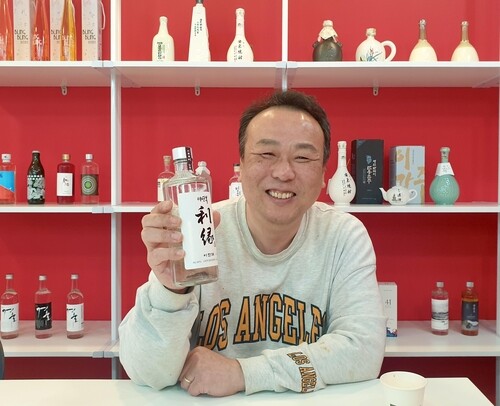
On Lunar New Year’s Day, our ancestors followed seasonal customs by eating specific foods and drinking particular types of alcohol.
In January, they ate tteokguk (rice cake soup), sikhye (sweet rice punch), and sujeonggwa (cinnamon punch). On the fifteenth day of the first lunar month, they prepared ogokbap (five-grain rice) and namul (seasoned vegetables). In March and April, they enjoyed hwajeon (flower pancakes) and minari ganghoe (parboiled water celery wrapped with fish). In July, they had samgyetang (ginseng chicken soup), while in August, during Chuseok, they made songpyeon (half-moon rice cakes). In October, they prepared kimchi for the winter.
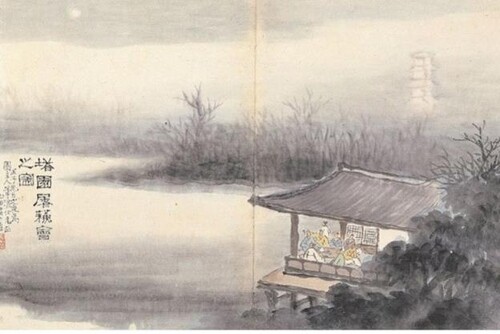 |
| ▲ An Jung-sik's "Tapwon Dosohwae Jido," a painting depicting a dosohoe gathering held on the night of Lunar New Year's Day in 1912 at the home of Wi Chang Oh Se-chang, is captured from the website of Kansong Art Museum.. The work is painted by An Jung-sik for Wi Chang. (PHOTO NOT FOR SALE) (Yonhap) |
During the winter solstice, they ate patjuk (red bean porridge), and in the twelfth lunar month, they made dongchimi (radish water kimchi), hobakbeombeok (mashed pumpkin porridge), and jocheong (grain syrup). Alongside these seasonal foods, they drank specific alcoholic beverages. On Lunar New Year’s Day, they consumed seju (歲酒), meaning "New Year’s alcohol," which was believed to bring health and longevity throughout the year. This was dosoju (屠蘇酒).
On the fifteenth day of the first lunar month, people drank gwibalgisul ("ear-clearing liquor"), while in the spring, they enjoyed dugyeonju (azalea liquor), dohwaju (peach blossom liquor), and songsunju (pine sprout liquor). On the fifth day of the fifth lunar month, they drank changpoju (calamus liquor), on Chuseok, sindoju (new rice liquor), and on the ninth day of the ninth lunar month, gukhwaju (chrysanthemum liquor).
The origins of dosoju trace back to China. Some attribute its creation to the renowned physician Hua Tuo (華陀) of the late Han dynasty, while others believe it was developed by Sun Simiao (孫思邈) during the Tang dynasty.
It was introduced to Korea early on and became widely consumed, particularly among the upper class. During the Goryeo dynasty, dosoju was commonly enjoyed, though it became less prevalent in the Joseon era.
In modern times, the tradition of drinking dosoju has nearly disappeared in China. However, in Korea, interest in traditional liquor has been growing, and more people are rediscovering the significance of dosoju.
Seju was consumed cold without heating, signifying its raw and unprocessed nature. The term "dosoju" carries symbolic meaning: "do" (屠) means "to eliminate," and "so" (蘇) refers to "evil energy," which in ancient times was associated with epidemics.
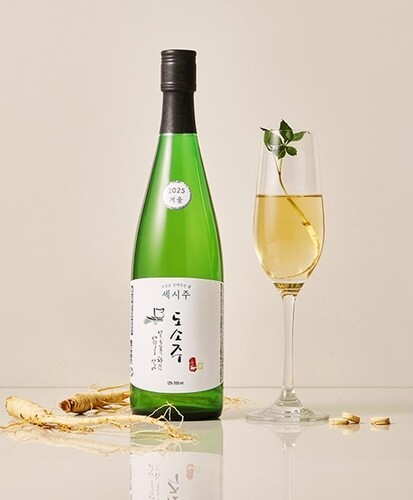 |
| ▲ 2025 Dosoju, captured from Baesangmyeon Brewery. (PHOTO NOT FOR SALE) (Yonhap) |
Thus, dosoju was believed to protect against infectious diseases and promote good health throughout the year. While it was called "alcohol," it was actually boiled thoroughly, eliminating its alcoholic content.
As a result, even children could drink it. On the morning of Lunar New Year’s Day, after performing ancestral rites, the entire family would sit facing east and drink dosoju in a specific order, starting from the youngest and moving to the eldest.
From the perspective of Confucian hierarchy, this order may seem unusual. However, it reflected both practical concerns—since children were more vulnerable to illness—and cultural beliefs. Gaining another year of age was a cause for celebration for the young but a more solemn event for the elderly, which may have influenced the drinking order.
Everyone sat facing east because it is the direction of the rising sun. By doing so, they symbolically received yang energy at the start of the new year, wishing for a safe and prosperous year ahead.
There are even poetic reflections on dosoju, humorously lamenting the passage of time.
In Bunaeyugo (汾厓遺稿), the scholar Shin Jeong (申晸, 1628–1687) wrote in the "New Year’s Day" section, "Do not lament being the last to drink dosoju, for I, too, was once young." Similarly, in Yeomhonjeok (恬軒集), Im Sang-won (任相元) wrote in the "New Year of the Year of the Snake" section, "As I drank dosoju, I realized how much I had aged."
The method for making dosoju is recorded in the Donguibogam (Principles and Practice of Eastern Medicine).
It is made with seven medicinal ingredients: rhubarb, white atractylodes, Sichuan pepper, balloon flower root, aconite (which is excluded today due to its strong toxicity), Japanese knotweed, and cinnamon bark. On the last day of the twelfth lunar month, a red pouch filled with these medicinal herbs was submerged in a well. At dawn on the first day of the new year, it was retrieved and placed into clear liquor, which was then boiled thoroughly and cooled before drinking.
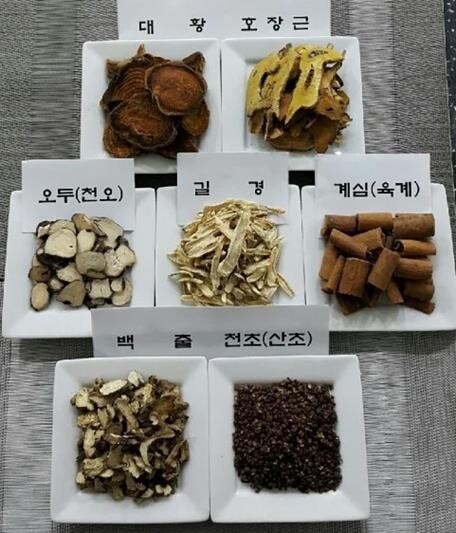 |
| ▲ Dosoju Ingredients, captured from Jinhyang Traditional Liquor Education Center. (PHOTO NOT FOR SALE) (Yonhap) |
The herb-filled pouch was then returned to the well so that all the villagers who used the water could share in its health benefits.
However, when dosoju could not be made, other medicinal liquors or refined rice wines were sometimes used as substitutes. Some people drank it like a medicinal wine by adding spices such as aromatic herbs and cinnamon. There is also the possibility that any liquor consumed on the morning of the new year was simply referred to as dosoju.
Baesangmyeon Brewery produces a limited-edition dosoju every year. This year, they released "2025 Dosoju" in a limited batch of 2,025 bottles. However, this version has an alcohol content of 12%.
For a simple homemade dosoju, one can prepare refined rice wine (yakju or cheongju) and purchase a pre-packaged set of medicinal herbs for samgyetang (ginseng chicken soup) from a grocery store. By boiling the liquor and herbs together for an extended period to completely evaporate the alcohol, dosoju can be made at home.
This Lunar New Year, after performing ancestral rites, gathering together and sharing a cup of dosoju while reflecting on its meaning could be a meaningful way to celebrate.
(C) Yonhap News Agency. All Rights Reserved

















